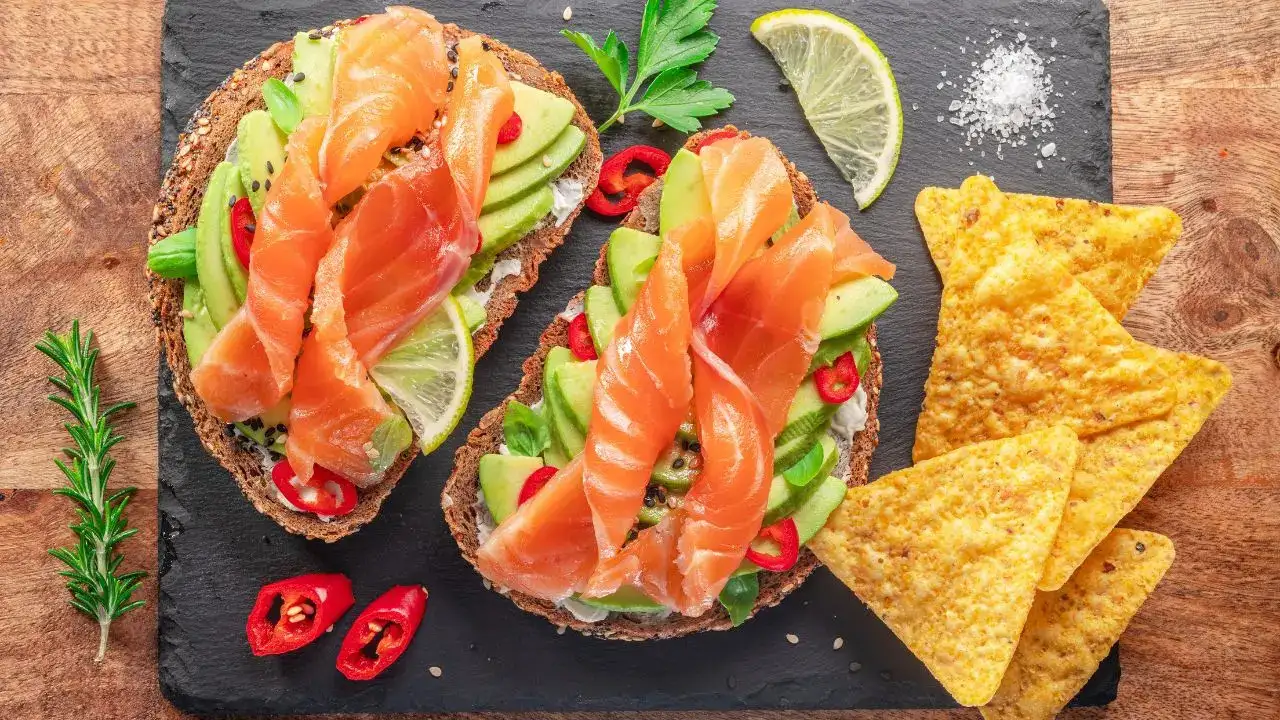By Eshita Bhargava
Copyright timesnownews

Picture this: a plate arrives at your table, its centrepiece a gleaming, coral-pink fillet, glistening as if it has been painted by an artist’s brush. The flesh flakes apart with the gentlest nudge of your fork, releasing buttery aromas that mingle with citrus, herbs, or a smoky char. Whether it’s crowned with sesame seeds in a sushi bar, rubbed with spices in an Indian kitchen, or glazed with miso in a fine-dining restaurant, salmon is everywhere. It is the fish that conquered the global menu — not just a dish, but a phenomenon. From the cold waters of Chile and Norway to bustling restaurant tables in Delhi, Tokyo, London and New York, salmon has emerged as the superstar of modern cuisine. But what makes this particular fish so irresistible to chefs and diners alike? Let’s plate up the story. A Global Star with Local Roots Salmon’s journey to ubiquity didn’t happen overnight. According to José Miguel Ugarte, Global Sales Director at AquaChile, the industry has spent over four decades honing its expertise: “The salmon industry is a vital part of Chile, with over 40 years of expertise in production and exports to more than 60 countries worldwide. Supplying both fresh and frozen salmon weekly, it has become a truly global product, celebrated for its versatility in cuisines across the world — from sushi bars to grills, and even traditional dishes like Japan’s kirimi breakfast.” In other words, salmon has become a passport fish. It fits as easily on a Tokyo breakfast table as it does on a Scandinavian smörgåsbord or a Mumbai grill. Its adaptability is its passport stamp, allowing it to slip into any cuisine without ever feeling out of place. A Universal Palette for Chefs Why do chefs adore salmon so much? Ask five, and you’ll get five different answers — yet all of them circle back to one theme: versatility. Chef Saurabh Sharan, Head Chef at Guppy, highlights the fish’s subtle balance: “It’s the subtle, delicate flavour and fine texture of salmon, combined with its evenly distributed natural oils, that make it such a versatile ingredient. Whether served as sashimi, lightly cured, grilled, or slow-roasted, salmon maintains a rich, satisfying mouthfeel without overpowering other ingredients.” That balance is the golden ticket. It means salmon can play a starring role in raw preparations like sashimi or gravlax, yet also stand up to smoky tandoors, zesty marinades, or bold sauces. It’s a chef’s dream canvas: neutral enough to experiment, distinct enough to shine. Chef Dhruv Oberoi of The Grammar Room puts it this way: “Salmon is one of those ingredients chefs love because it’s incredibly versatile. It works beautifully raw, cured, smoked, or roasted, and it effortlessly balances simplicity and complexity. Its adaptability and natural richness make it a joy to cook with.” From kasundi-spiked roasts to Nordic dill gravlax, Oberoi sees salmon as a bridge between cultures — and between the everyday and the extraordinary. India’s Affair with Salmon Not long ago, many in India assumed salmon was the preserve of Japanese cuisine. That’s no longer the case, says Chef Vicky Ratnani, AquaChile: “In India, the myth that salmon belongs only in Japanese food is changing. Its buttery, rich flavour pairs beautifully with Indian spices like cumin, coriander, garam masala, and amchur. Whether marinated in mustard oil and tandoori paste or cooked with fusion styles like coca moly salmon with lime rice, its versatility makes it universally appealing.” The visual contrast is striking: ruby tandoori char on the outside, pink salmon flesh inside. It’s fusion food that makes perfect sense — a fish that looks indulgent but eats light, modern yet rooted in tradition. Chef Shantanu Mehrotra of Indian Accent has also found salmon a natural fit for high-end Indian dining: “Salmon has been a star on our menu with masala miso. Scottish salmon with umeboshi raita, tandoori salmon with fresh fennel and cucumber raita, and even Norwegian salmon with petit pois and sour malai at Indian Accent New York City, all celebrating its health benefits and rich omega-3 profile.” Here, salmon is both a flavour vehicle and a symbol of luxury, seamlessly woven into Indian fine dining. Health, Wellness, and the “Protein of the Future” Of course, food trends also played a big role in salmon’s rise. We live in an age where “wellness” is no longer just a yoga mat and green juice — it’s what you eat, too. As José Miguel Ugarte explains: “Salmon is often called the protein of the future as it perfectly aligns with global food trends. Rich in nutrients, it supports heart health, brain function, and overall well-being, making it one of the most complete proteins available. It is even recommended for pregnant women as part of a balanced diet, which resonates strongly with the rising demand for wellness-driven food choices worldwide.” Forget chalky protein shakes. Salmon is the original functional food, delivering omega-3s, high-quality protein, and a good dose of indulgence in one fillet. Chef Saurabh Sharan points out how awareness has evolved: “Omega-3 has always been essential for health, long before it became a buzzword. These days, people are far more aware of the importance of healthy eating, and they prefer to get their nutrition through real, whole foods. Salmon naturally fits that need.” For today’s diners, salmon is proof that you don’t have to choose between health and pleasure. The Sustainable Luxury Modern diners are also asking hard questions: where does my food come from? Is it sustainable? Salmon, once criticised for farming practices, has become a poster child for change, with better sourcing and responsible aquaculture. Chef Dhruv Oberoi notes: “Pair that with better access to sustainable sourcing, and salmon has become a symbol of modern dining — conscious, creative, and a little luxurious.” This combination is what Chef Jatin Mallick of Tres calls the “new balance” in food culture: “Diners no longer see health and indulgence as two separate things — salmon manages to be both. It’s nutrient-rich, packed with omega-3s, yet feels luxurious on the palate. People today are more mindful about sustainability and wellness, yet they don’t want to compromise on flavour, and that’s exactly where salmon shines.” At Tres, Mallick uses salmon in dishes like fermented chilli-glazed salmon with charred greens and caramelised yoghurt, a perfect visual of modern cuisine: fiery, vibrant, and elegant all at once. The Visual Appeal Let’s not underestimate the sheer look of salmon. That blushing pink flesh, often described as jewel-like, makes it irresistible on menus and Instagram feeds alike. Diners eat with their eyes first, and salmon delivers on both beauty and taste. Chef Mallick captures it: “Diners from all walks of life are drawn to its alluring pink hue and inherent richness. It gives cooks endless creative freedom and constantly infuses diners with a feeling of decadence.” From sushi rolls wrapped like little edible artworks to golden-skinned roasts glistening under restaurant lights, salmon is as much a visual pleasure as a culinary one. Why Salmon Rules the Menu So, why has salmon, among all the world’s fish, claimed the crown? It’s not just its flavour, though that buttery richness certainly helps. It’s not just its health credentials, though omega-3s have given it superstar status among nutritionists. And it’s not just its visual beauty, though its pink hue has made it the darling of both chefs and diners. It’s all of these things, woven together. Salmon is the rare ingredient that manages to be versatile and distinctive, indulgent and healthy, global and local. It’s as at home in a Japanese sushi bar as it is on an Indian grill or a Scandinavian breakfast plate. It reflects modern dining itself: borderless, health-conscious, sustainable, and stylish. From Chilean waters to Delhi restaurants, salmon has swum into the centre of our plates and refuses to leave. And why would it? Few ingredients can carry so many flavours, so many stories, and so much sheer beauty in every bite.



